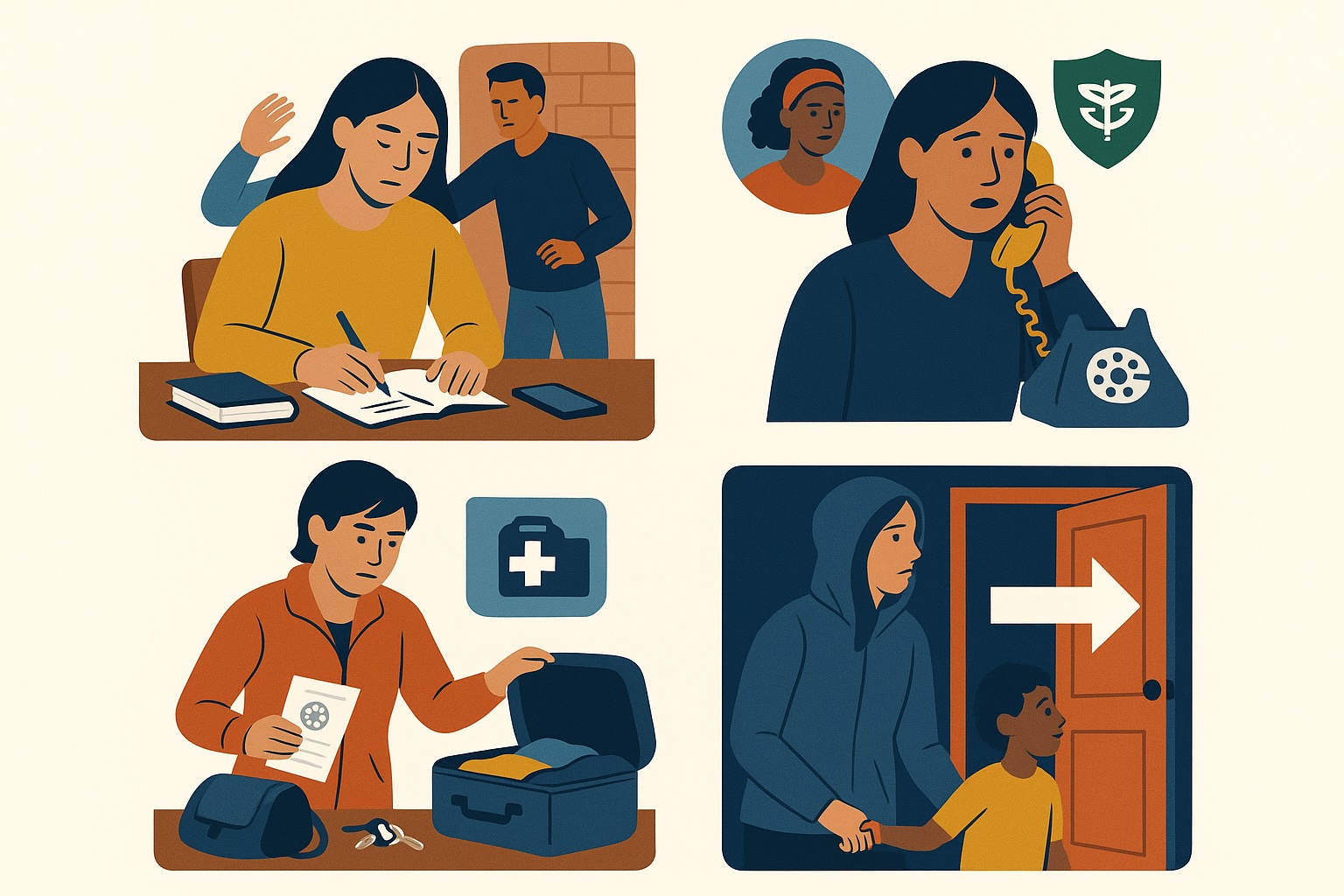Safe Exit Strategies for High-Risk Domestic Violence Situations in Ontario
Leaving an abusive partner can be the most dangerous time. Learn how to plan a safe, discreet exit—even if you’re being watched or controlled.

For survivors of domestic violence, the moment of leaving is often the most dangerous. Many homicides occur after a victim separates or attempts to leave. That’s why it’s crucial to have a well-thought-out, discreet plan for escape—especially in high-risk situations.
Here’s how to plan a safe exit if you’re in danger in Ontario.
❗ Why a Safe Exit Strategy Is Critical
-
Abusers often escalate violence when they feel they’re losing control
-
Survivors may be monitored, restricted, or financially dependent
-
Children, pets, or documents can complicate a fast departure
-
Proper planning can save lives
🧠 Before You Leave: Planning Quietly
-
Avoid telling your abuser you're planning to leave
-
Reach out to a women’s shelter, helpline, or legal aid
-
Use a safe phone or public computer if yours is monitored
-
Work with a support worker to create a personalized exit plan
-
Gather and hide essential items (see below)
🎒 What to Pack in a “Go Bag” (Hide it or store with someone safe)
-
Government ID and children’s ID
-
Birth certificates, immigration documents
-
Debit/credit cards, cash
-
Medications, glasses, health cards
-
Keys (home, car, mailbox)
-
Prepaid cell phone
-
Comfort items for children
-
Court papers, restraining orders
🛑 If You’re Being Watched
-
Clear browser history and text logs after researching
-
Avoid using shared calendars or cloud services
-
Don’t take obvious packing steps
-
Delete navigation history if using Google Maps or rideshare
-
Consider using public Wi-Fi or incognito browsing mode
📍 Choosing the Right Time and Place to Leave
-
Leave when the abuser is away, at work, or asleep
-
Plan your route ahead—avoid predictable places (like relatives’ homes)
-
Go to a shelter, police station, hospital, or friend’s home
-
Keep your phone charged and location tracking disabled
-
Tell only one or two trusted people about your plan
🚔 In Immediate Danger?
-
Call 911 or leave immediately
-
Say: “I need help with domestic violence. I’m not safe.”
-
If you can’t speak, leave the line open—dispatchers are trained to trace calls
-
Use safe words or pre-set signals with children or friends
-
Bring only essentials—your safety is the priority
🏠 After You Leave
-
Don’t return home unless escorted by police
-
Change locks, passwords, and security questions
-
Alert schools, daycare, banks, and employers
-
Ask police or support agencies about panic buttons or safety audits
-
Consider legal protection (restraining order or peace bond)
📌 Summary: Safe Exit Planning in Ontario
-
✅ Never confront the abuser or announce your plan
-
✅ Pack a discreet emergency bag ahead of time
-
✅ Use public devices and delete activity logs
-
✅ Leave during a predictable, low-risk window
-
✅ Get to a shelter or safe space and alert authorities
📞 Where to Get Help Planning an Exit
-
Assaulted Women’s Helpline (24/7): 1-866-863-0511
-
Luke’s Place: lukesplace.ca – Legal and safety planning help
-
211 Ontario: Dial 2-1-1 for local shelters and crisis programs
-
Barbra Schlifer Clinic (Toronto): Legal and counseling support for women
-
Ontario Women’s Shelters: Most offer free exit planning with trained advocates
Frequently Asked Questions (FAQs)
1. What is the most dangerous time for a domestic violence survivor?
The most dangerous time is when a survivor is planning to leave or has just left an abusive relationship. This is when abusers are most likely to escalate their violence in an attempt to regain control. This is why secret safety planning is absolutely critical.
2. I'm afraid to call a shelter from my own phone. What should I do?
This is a valid fear. If you think your phone is being tracked, use a friend's phone, a payphone, or a phone at a public place like a library or community centre. You can also buy an inexpensive prepaid "burner" phone with cash to make your safety calls.
3. What if I have to leave in a hurry and can't take my go-bag?
Your life is the most important thing. If you have a chance to get out safely, take it, even if you have to leave everything behind. Once you are safe at a shelter, staff will help you get necessities and make a plan to replace your important documents.
4. How do I keep my location private after I leave?
Turn off location services and GPS on your smartphone. Be very careful about what you post on social media and ensure your privacy settings are at their highest level. Avoid "checking in" to locations online.
5. What is a "safe word"?
A safe word is a pre-arranged, innocent-sounding word or phrase you can use with your children, friends, or family to signal that you are in danger and need help immediately, without alerting the abuser.
6. Should I get a restraining order before or after I leave?
This depends on your specific situation and is something you should discuss with a support worker or lawyer. In many high-risk situations, it is safest to leave first and then go to court for an urgent, temporary restraining order once you are in a safe location.
